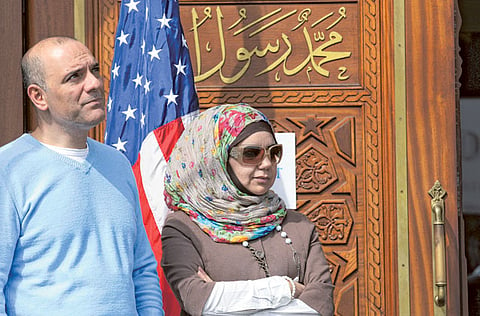Islamophobia incidents on the rise in US
Coke ad fuels stereotype amid reports of increased rates of anti-Muslim incidents

Dubai: In Oklahoma City, a Muslim family placed a sign on their lawn wishing “as-salaamu alaykum” or peace be upon their neighbours.
On Friday night, just after 8pm, the neighbours answered. A volley of high-calibre shots ricochetted off the walls and ripped through windows, spreading fear and terror to the family inside. Luckily, no one was injured, but the attack came several days after the family’s son was stopped and asked about his religion.
The Oklahoma chapter of the Council on American-Islamic Relations (CAIR) has called on Oklahoma state and federal law enforcement agencies to investigate the crime as hate-motivated.
“Any time the home of a family belonging to an ethnic or religious minority is attacked in a potentially deadly manner, it is only prudent to investigate a possible bias motive,” said Adam Soltan, executive director of the local chapter of Council on American-Islamic Relations (CAIR).
Sadly, it’s not as if the incident was isolated. Muslim groups across the US are reporting increased rates of anti-Muslim incidents, discrimination and Islamophobia.
There was a 10 per cent increase in anti-Muslim incidents in 2012 reported by the San Francisco Bay Area office of the Council on American-Islamic Relations. It reported 283 separate incidents over the course of the year and included, among other issues,complaints of employment discrimination, requests for legal representation for voluntary interviews by FBI and other law enforcement agencies, and reports of hate crimes.
In Chicago, it’s a similar story. Last week, Muslim grave markers at a suburban Chicago cemetery were stray painted with hate graffiti.
“Whenever a symbol of any faith is targeted in this manner, it makes sense to consider a bias motive for the crime,” said Ahmad Rehab, executive director of CAIR in the city.
“We have witnessed 10 anti-Muslim hate crimes in the Northwest in just the past year, which should be serious cause for concern and corrective action,” Arsalan Bukhari, CAIR’s executive director for Washington State said.
He said the increase in Islamophobic rhetoric and an accompanying spike in bias incidents is another issue of great concern to the state’s Muslim community.
“Muslim constituents will work to make lawmakers aware of the growing problem of Islamophobia and of the veiled and camouflaged manner in which it is being promoted. It is imperative that local and national leaders speak out and condemn the growing level of anti-Muslim prejudice and work with their Muslim constituents and their allies to oppose this promotion of bigotry against minorities, whatever the source.”
But for all of the work CAIR does in fighting Islamophobia, it’s a case of two steps forward, one step back, with the media failing to distinguish between Arab and Muslim — fuelling xenophobia.
Last night, an audience of more than 200 million Americans and countless other television sets worldwide were tuned to the Superbowl — the culmination of all-things NFL and the largest marketing bonanza for advertising executives. Coke generated complaints and a CNN debate by pundits when Arab-American groups sharply criticised its ad as racist.
Coca-Cola released an online teaser of the commercial last week, showing the Arab walking through a desert. He soon sees cowboys, Las Vegas showgirls and a motley crew fashioned after the marauders of the apocalyptic ‘Mad Max’ film race by him to reach a gigantic bottle of Coke.
“Why is it that Arabs are always shown as either oil-rich shaikhs, terrorists, or belly dancers?” asked Warren David, president of the American-Arab Anti-Discrimination Committee, or ADC.
Viewers of the 60-second spot, launched on January 22 on YouTube, are asked to vote for a winner of the chase, but the Arab is not among those on Coca-Cola’s online ballot. That exclusion—plus the Lawrence of Arabia-style dress — drew charges of racism from the ADC and Muslim Institute for Interfaith Studies.
“The Arab-American community has been experiencing demonisation in television and the media,” said Abed Ayoub, legal director for the committee. The fact that this is occurring in one of the largest television events of the year aroused concerns.”
“The problem with the ad is that it relies on stereotypical characters to tell their story,” says Chris Lehtonen, president of Asterix Group, a San Francisco-based multicultural marketing firm. “While it may not be blatantly racist, the fact that it pits these groups against each other in the ad is insensitive. It is trying to sell their product at the expense of these groups.”
— With inputs from Reuters, AP
Sign up for the Daily Briefing
Get the latest news and updates straight to your inbox



